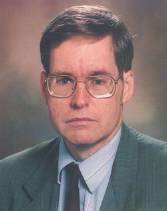April 1998
Therapeutic (?) Touch
By Michael J. Katin, MD
Much has already been written about the science fair project by 9-year-old Emily Rosa regarding the detection of energy fields by practitioners of "Therapeutic Touch." Often news stories have a different significance to people of different backgrounds, and I detected that there were ramifications of this story that affected practitioners of "Therapeutic Radiology." This also allowed generation of the April, 1998, column.
The webmaster and I would like to take this opportunity to call attention to the continuity of contributions to this website and, of course, to note that many other websites lie abandoned and rotting, and we will not be gauche enough to mention any names.
For the few that may not have heard about Miss Rosa's project, this was designed to determine whether practitioners of "Therapeutic Touch" could detect energy fields, which was pertinent since the basis of this technique is manipulating energy fields of a sick patient to bring the fields into balance. This may be too simple a description, but the point was that at least these persons should be able to detect the existence of a fields even if manipulating them was speculative. The tested subject placed both hands through holes in a barrier and was asked to sense which hand was approached by Miss Rosa's hand. The results matched those that would be achieved by chance alone, with no evidence that any of these practitioners could sense an energy field.
This raises several observations. First, we are ourselves involved in the manipulation of invisible fields, with the main difference being that 1. they exist, and 2. they can be detected by expensive electronic equipment. It is still frustrating, however, that we cannot actually see the beam at work and neither can the patients. I always thought it would be good to set up a light field that intensifies during the time of the treatment, possibly even like a strobe light, and preferably colored as well. This could potentially backfire, since even when the beam is invisible patients (and referring physicians) attribute amazing qualities to the beam, such as affecting the other end of the body (e.g., constipation resulting from irradiation of the larynx) and perhaps making the treatment more dramatic might be counter-productive. Similarly, having a radiation detector beeping or flashing during the treatment would be disconcerting. If people are willing to accept that Therapeutic Touch practitioners can work with an invisible beam, we should be more satisfied with ours.
Second, in many states Therapeutic Touch is recognized as a valid medical technique and can be reimbursed. While we in Therapeutic Radiology are begging and scraping to get paid for what we do, it is certainly discouraging to think that money that could be spent on hyperthermia, bolus material, support devices, and other necessities is being funnelled away to pay for Therapeutic Touch.
Third, it is hoped that Therapeutic Touch is under the same scrutiny as other forms of medical care, with JCAHO inspections, outcome analysis, clinical pathways, and board examinations (written, oral, and tactile).
I think it is more likely that politically correct forces will prevail, and that Emily Rosa's project will be purged from the data banks and that we can work with Therapeutic Touch as we do with other modalities. I am looking forward to protocols with combined modality treatments, probably best supervised by the RTTTOG (Radiation Therapy and Therapeutic Touch Oncology Group). Please direct other suggestions to Dr. Pettter Blitttzer, incoming presidenttt of ACROTT.
email: mkatin@radiotherapy.com
